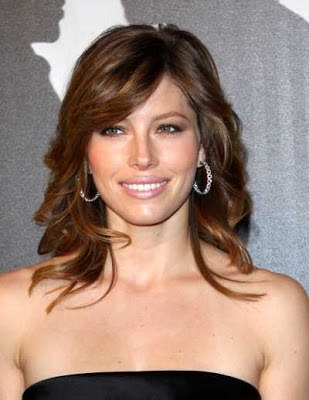Hairstyles for Medium Hair Biogarphy
Source(google.com.pk)Flamboyant, rebellious and not entirely gender specific, the quiff rolls into history as the rebellious offspring of the pompadour hairstyle. But why do we have a masculine hairstyle that is inspired by a trendy 18th Century French actress, or is this a feminine style that rallies against soft, wispy flowing locks?
I don’t know. You decide. Let’s take a trip in the time machine.
Hmm. Quiff is a strange word for a hairstyle. Where does it come from?
Knights are wearing a new type of head protection also called coif. This is a chain mail covering like a balaclava under the helmet to protect the head and neck. This often left a tuft of hair at the front.
Either way, coifs may have been the inspiration behind using the word quiff for a hairstyle. The word itself is French but can be dated back to an old German word for cap.
In Eastern cultures, ornamental hairstyles are pulled into elaborate styles by women. The Geisha culture in Japan sees women to spend time on decorating their hair into structures that have a sweep of hair pulled up at the top of the forehead.
The pompadour is named after Jeanne-Antoinette Poisson Le Normant d’Étioles, or Madame de Pompadour, the mistress of Louis XV. She was born in the French town of Arnac-Pompadour. At first a fashion pioneered by this trendy, influential actress, it soon becomes a sign of wealth and status.
The hair is pulled away from the face and high onto the head at the front and sides. This swirl of whipped cream hair is teased into shape over a wire frame. Eventually, this style becomes more extreme and over-exaggerated.
Gibson Girl fashion revives the 18th Century pompadour by piling hair away from the face in a swirl piled high on top of the head. It is a more practical style than the original pompadour — no longer just for royalty and aristocrats but for the emerging middle classes too. This style is popular with women right through until World War I, when styles become even more practical out of necessity and preference.
From the late 19th Century onwards, the growth of photography and travel to previously inaccessible places, increases curiosity for different cultures. East meets West and ancient meets modern, each taking something from the other in a curious mix. A fascination for what is termed the ‘exotic’ enters the Western design world. It becomes fashionably modern to copy styles of tribal identity using dress and hairstyle. Some Native American women, such as the Seminole, wear pompadour-like styles using card and postiche type reinforcements. Several tribes in Africa, Asia and America also saw men wear their long hair away from the face and in a high style at the front.
Hairstyles have also been used to set people apart within their tribe according to the roles within that tribe. For example, men have worn their hair differently if they are about to go to war. When Africans were brought to Europe and America as slaves they were forced to lose the hairstyles which gave them their personal and tribal identity. Their heads were shaved to remove identity and dignity. This also happened with prisoners.
Hairstyles for Medium Hair

Hairstyles for Medium Hair

Hairstyles for Medium Hair

Hairstyles for Medium Hair

Hairstyles for Medium Hair

Hairstyles for Medium Hair

Hairstyles for Medium Hair

Hairstyles for Medium Hair

Hairstyles for Medium Hair

Hairstyles for Medium Hair

Hairstyles for Medium Hair
No comments:
Post a Comment